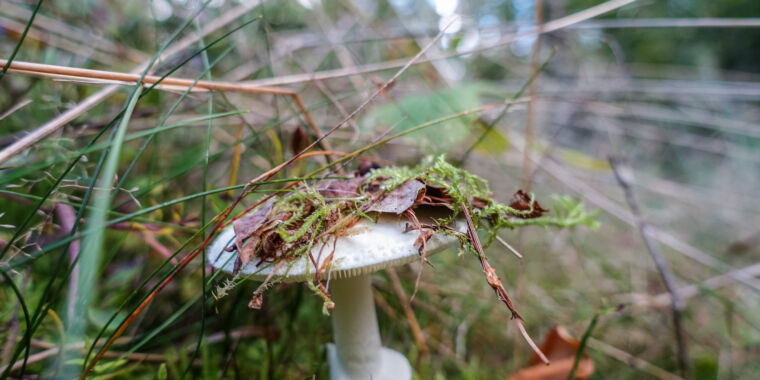
For some, a ‘bad trip’ of magic mushrooms means a metaphorical journey into a dark corner of the mind, conjuring up horrifying images and intense suffering. But for many, a bad trip is very real — a trip to an emergency room as deadly toxins circulate in the body, killing liver tissue and threatening lives.
Such is the terrifying experience of those who decide to seek wild mushrooms in the US with no expertise in mycology. They probably don’t realize that there are several deadly mushroom species in the country, which are surprisingly common, almost indistinguishable from safe, edible mushrooms, and in some cases taste good. The deadly toxins don’t take effect until hours later.
These deadly fungi are found all over the US but are currently in bloom in Ohio, where doctors warn against foraging mushrooms after a string of poisonings. The Cincinnati Children’s Hospital closed at the end of last month a warning that they had received several patients who had been poisoned by eating wild mushrooms grown in the southwestern part of the state. “You should never eat wild mushrooms,” the hospital wrote in a tweet. It also advised anyone with symptoms after eating a wild mushroom to contact the local poison control center immediately.
Meanwhile, doctors up north in Cleveland also reported an increase in mushroom poisonings and sent out their own warnings against eating cultured fungi. “The bottom line is that it’s a very, very dangerous proposition for anyone, especially between the September 15 and October 15 dates in Northeast Ohio. That’s when these things tend to grow,” Pierre Gholam, a liver specialist at University Hospitals and a professor at Case Western Reserve University, Cleveland.com told this week. “It’s really playing Russian roulette with your health.”
Gholam told the outlet he had expected mushroom blooms to be poor this year, given the area’s humid, rainy summer. “I could tell from my own garden that this was not going to be a good season,” he said.
Trippy Toxins
The mushrooms worrying Gholam and other health officials are deadly amanita mushrooms. There are many amanita species, many of which are harmless, but all of them deadly are classified in the section Phalloideae. The section includes: Amanita phalloides, which is commonly known as the “death cap.” It also includes a cluster of closely related all-white species commonly referred to as “destroying angels” or sometimes “death angels,” including A. bisporigera and A. ocreata found in the eastern and western US, respectively, such as: A. virosamainly found in Europe.
This deadly array of mushrooms contains amatoxins, including alpha, beta and gamma amanitin. Amatoxin poisoning is responsible for more than 90 percent of all mushroom poisoning deaths worldwide. Part of what makes them so deadly is that they can be easily confused with other completely edible mushrooms. Death caps, for example, can look a lot like straw and gypsy mushrooms. The various destroying angels can be mistaken for button, meadow, and horse mushrooms. In Cleveland, Gholham recently treated a patient who had eaten a deadly Amanita mushroom he found in his garden after a plant identification app on his phone identified the mushroom as an edible variety. It almost killed him.
The amatoxins of the mushrooms are easily absorbed by the gastrointestinal tract once eaten. From there, the toxins travel to the kidneys and especially the liver, one of the main organs in the body for making proteins. Amatoxins work by blocking a key enzyme involved in making new proteins called RNA polymerase type II. In the liver, blocking this enzyme causes a cascade of problems leading to cell death and tissue necrosis. While some of the toxin is eventually flushed out in the urine, some of it is transported out of the liver with bile acids, where they make their way back into the gut to start the process all over again — in what’s called an enterohepatic cycle.
If you’re wondering, there’s no way to avoid these toxins once you accidentally pick a deadly mushroom. They are extremely stable. Not cooking, freezing or drying will break them down.

